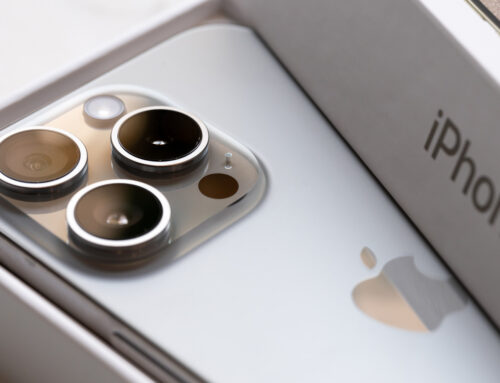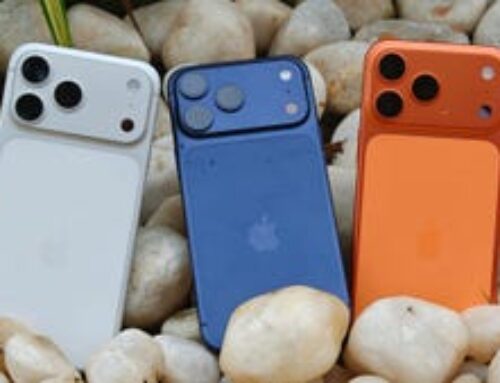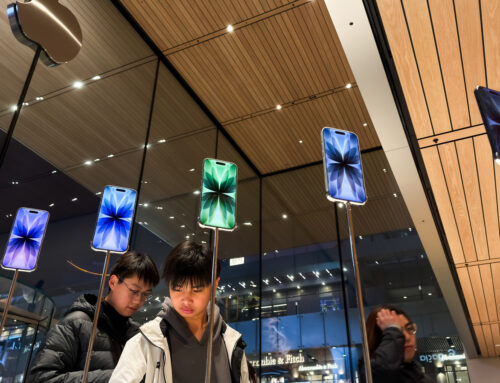AT&T loses another ad-board ruling just a week after suing the organization.
AT&T store in New York City on November 18, 2024.
Credit:
Getty Images | wdstock
AT&T has been told to stop running ads that falsely promise all customers a free iPhone. The rebuke came from the advertising industry’s official watchdog just a week after AT&T sued the organization over a different advertising dispute.
BBB National Programs’ National Advertising Review Board (NARB) “has recommended that AT&T Services, Inc. modify its advertising to avoid conveying a false message regarding eligibility for an iPhone device offer,” the group, which runs the ad industry’s self-regulatory system, said today.
Verizon initiated the case by challenging AT&T’s “Learn how everyone gets iPhone 16 Pro on us” claim. BBB National Programs’ National Advertising Division (NAD) ruled in favor of Verizon in September 2025. AT&T appealed but lost the challenge in the NARB decision announced today.
“The NARB panel agreed with NAD’s conclusion that the challenged advertising, on its face, conveys a false message that everyone ‘gets’ a free phone and does not clarify the message by disclosing a material limitation to the offer of a free cell phone in a clear and conspicuous manner,” the group said.
In reality, the offer was only for AT&T customers on certain plans, excluding customers with low-cost plans. “The panel recommended AT&T modify its advertising to avoid conveying the message that everyone is eligible for AT&T’s free cell phone offer, or to clearly and conspicuously disclose that subscribers to value plans are not eligible or otherwise make clear the extent of plan eligibility,” the NARB announcement said.
The NAD’s September decision said “the term ‘everyone’ means every person, without exception,” and helpfully cited the Merriam-Webster definition of “everyone.”
AT&T sued board after it demanded ads be halted
The ruling isn’t a very timely one given that AT&T started making the iPhone 16 offer over a year ago, and the iPhone 17 is now available. But it could cause AT&T to use different wording in future ads. In an advertiser’s statement published with the ruling, AT&T said it “supports NARB’s self-regulatory process and will comply with NARB’s decision.”
AT&T sued BBB National Programs last week after the group demanded that AT&T stop using its rulings for advertising and promotional purposes. The conflict stems from an ad campaign in which AT&T portrayed itself as a paragon of honesty while calling T-Mobile “the master of breaking promises.”
AT&T’s lawsuit criticized the NAD for its slow decision process, saying that it allowed T-Mobile to air deceptive advertisements without meaningful consequences. AT&T apparently benefited in a similar manner given that the NARB ruling came over a year after the iPhone 16 release.
Companies that participate in the self-regulatory process agree to rules including a prohibition on using NAD and NARB decisions for “advertising and/or promotional purposes.” The NAD said that AT&T violated the rules “by issuing a video advertisement and press release that use the NAD process and its findings for promotional purposes.”
The AT&T press release said the NAD “asked T-Mobile to correct their marketing claims 16 times over the last four years,” and an AT&T commercial featuring Luke Wilson said T-Mobile has faced more challenges for deceptive ads from competitors than all other telecom providers in that time. AT&T’s lawsuit defending the ad campaign said the company didn’t violate the rule because it didn’t cite any specific decisions and asked the court for a declaration that “NAD has no legal basis to enforce its demand for censorship.”
AT&T claimed ad was literally true
AT&T and T-Mobile both have a history of misleading advertisements, and the latest NARB decision adds to AT&T’s ledger. The ad on AT&T’s website stated, “Learn how everyone gets iPhone 16 Pro on us when you trade in your old iPhone in any condition.”
“Focusing on the words ‘everyone gets,’ Verizon argued to NAD that the challenged advertising communicated an explicit message—that all AT&T subscribers are eligible for the trade-in offer—which it asserts was literally false because only subscribers to ‘qualifying’ AT&T plans are eligible. Verizon also argued that the advertisement communicated a comparable misleading message that all AT&T customers were eligible for the trade-in,” the NARB decision said.
While AT&T disclosed the offer limits, Verizon argued that the disclosure was not clear and conspicuous. Verizon said—and the NAD agreed—that the phrase “everyone gets” suggests everyone will get a free phone, not that everyone “can get” a free phone if they subscribe to AT&T’s more expensive plans.
AT&T claimed the ad was literally true because it did not say that everyone “will” get the free phone. “Rather, according to the advertiser, the challenged language communicates that all customers, current or new, can qualify for the offer and urges customers to ‘learn’ the details about the trade-in opportunity,” the NARB said.
AT&T argued that the word “learn” makes it clear there are limits on the offer. The NAD disagreed, saying that the “learn how” phrase “precedes the word ‘everyone,’ suggesting everyone is eligible to receive a phone, not that everyone can learn how to get a phone.”
AT&T also submitted the results of a customer survey, arguing that it proved customers seeing the ad understood the offer’s limitations. The NAD decided that the survey was methodologically unsound, while the NARB said that both AT&T and Verizon offered “plausible” interpretations of the results.
Panel: Buyers of low-cost plans likely duped
After hearing AT&T’s and Verizon’s arguments, the NARB panel decided “that the challenged advertising, on its face, conveys a false message and further does not clarify the message by disclosing a material limitation to the offer of a free cell phone in a clear and conspicuous manner.”
The panel also said it is concerned that the consumers most interested in AT&T’s cheaper plans, which don’t come with the free phone, would be the most susceptible to being motivated by the free offer.
In addition to saying it “will comply with NARB’s decision,” AT&T said in its advertiser’s statement that “we appreciate NARB’s acknowledgment that the consumer survey in this matter plausibly supports the conclusion that the challenged advertising is truthful and not misleading. While we respectfully disagree with NARB’s recommendation that the advertising be modified, we will take that recommendation into account in the future.”
In an additional statement provided to Ars, AT&T said, “We will comply with the NARB’s decision. T-Mobile, as we said in our lawsuit, claims to play by the rules but in fact has gamed the NAD system to keep their ads on the air for months, even after they’ve been found to be misleading, false, or unsubstantiated.”
In another case decision in September, the NAD recommended that AT&T modify or discontinue claims related to an “AT&T Guarantee” that didn’t have clear disclosures about the amount of time it takes AT&T to fix network outages and how long an outage must last before the guarantee takes effect. AT&T said it would comply with the ruling.
In August 2024, AT&T was rebuked for an ad that falsely claimed the carrier was already offering cellular coverage from space. It has also gotten in trouble for advertising 4G LTE service as “5GE” and making misleading promises of unlimited data.
Jon is a Senior IT Reporter for Ars Technica. He covers the telecom industry, Federal Communications Commission rulemakings, broadband consumer affairs, court cases, and government regulation of the tech industry.









